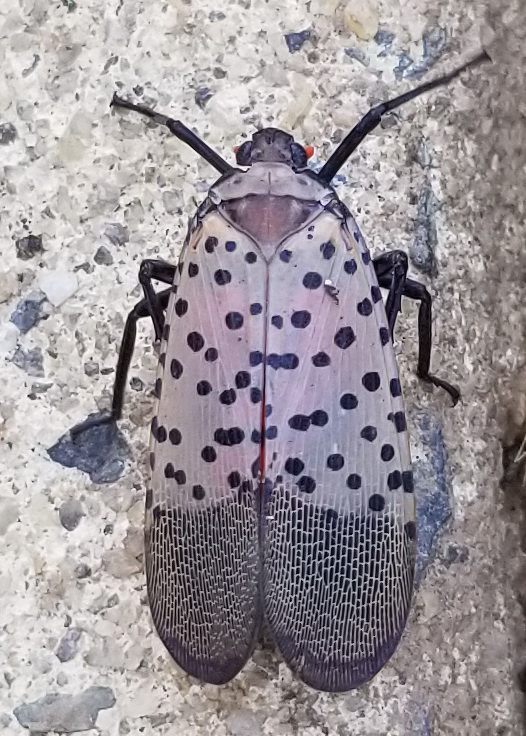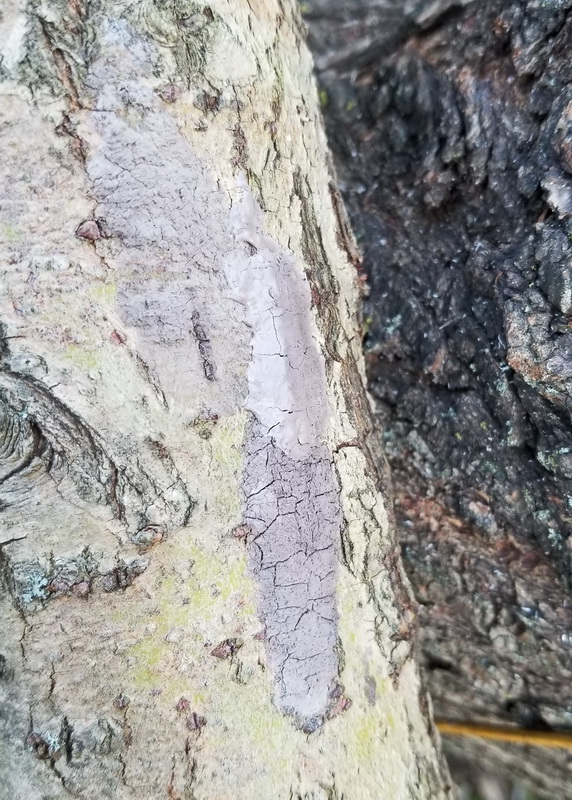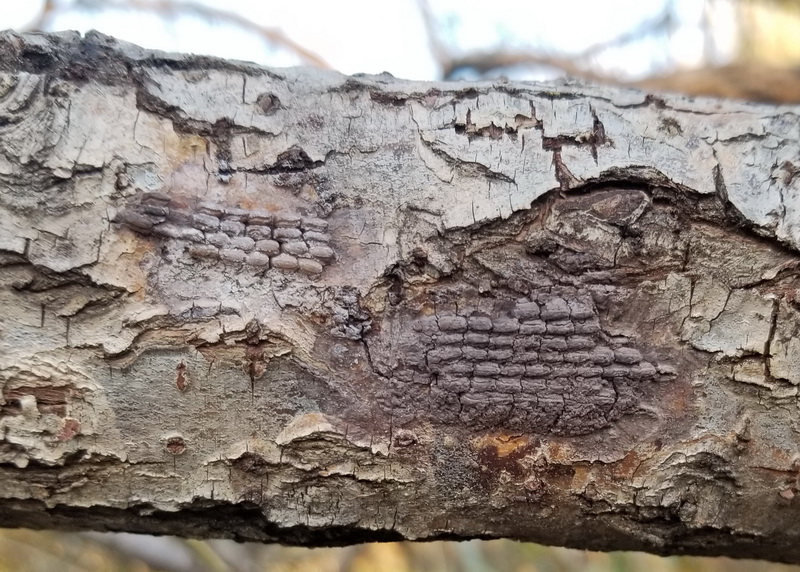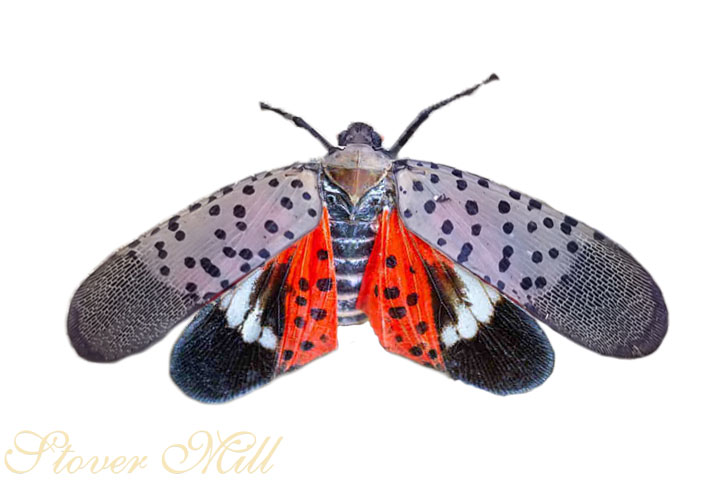In 2014, an invasive insect species known as Spotted Lanterfly was discovered in Berks County, Pennsylvania. Native to Asia, this insect causes serious damage to trees and other plants by feeding on them. The Spotted Lanternfly then excretes a sugary substance which encourages the growth of a type of mold that does not harm humans, but is dangerous to plants.
Tree of Heaven is the native plant for Spotted Lanternflies. Since there are not many of these trees in our area, the insects have adapted to our regional plants, including fruit bearing, hardwood trees and ornamentals. The weeping willow in the large field at the back of our neighborhood was infested when it fell during the severe storm in October.
Identify the Spotted Lanternfly

An adult Spotted Lanternfly is about one inch long. At rest, the wings fold back to cover the body. The top wing layer is a gray color with black spots, and black tips with gray veins. This allows them to blend into trees and ground.
As you see in the featured image of this article (shown above), under the top wing layer is a layer that is bright red with black spots, black and white stripes. The red of the wings develops as the insect matures. The body is black with yellow edges and abdomen.

The Spotted Lanternfly lays its eggs in groupings on the underside of larger branches (about 2″ or greater) of trees. Likely to protect the eggs from the sun and predators.
The egg masses may look like a long, gray mud splatter on the tree, as shown to the left. The mass may be glossy or look wet if it was created more recently. Sometimes the egg pods are visible, like shown below.

The egg masses are typically about one inch wide by two to four inches long, and may hold up to 50 eggs.
The Spotted Lanternfly nymphs are very small (eighth-inch to half-inch long) and difficult to locate.
Only the adults can fly, but Spotted Lanternflies are able to jump several feet quickly. Spotted Lanternfly juveniles cannot fly.
Spotted Lanternfly Quarantine
Initially, only Lehigh County had a voluntary quarantine. Over the next few years, the quarantine has expanded to encompass South-Eastern Pennsylvania, From Dauphin County to the Delaware River, and Monroe County through Chester County.
We are in a quarantine area. It is important to inspect our vehicles for Spotted Lanternfly insects and eggs (Fall through Spring), before leaving the quarantine area. This is particularly important if moving a stationary object, like a grill or outdoor furniture, to inspect that item before moving out of the quarantine area.
See It – Kill It!
If you see a Spotted Lanternfly, be sure to kill it. Stepping on them is very effective and can be fun. They can be quick jumpers, so don’t hesitate.
Scrape egg mass off of any surfaces where found. PennState Extension recommends scraping them into a bag or container filled with rubbing alcohol or hand sanitizer. Seal it and leave the eggs in the solution permanently. The egg masses can also be smashed or burned.
Report infestations to the Pennsylvania Department of Agriculture, or your state’s department of agriculture if outside Pennsylvania. This is especially important if any Spotted Lanternfly are found outside the quarantine area.
Remove the Host
Removing the native host plant, Tree of Heaven, will help control the Spotted Lanternfly, but bear-in-mind that the insect has adapted to other plants.
Insecticides
Insecticides can be used to kill these pests, however insecticides will kill other insects as well. Insecticides should only be used when absolutely necessary. Insecticidal soaps and neem oil work good when sprayed directly onto Spotted Lanternflies, while leaving little residue that may harm other insects.
More Information
More information on the Spotted Lanterfly and the Quarantine is available from PennState Extension and Pennsylvania Department of Agriculture.

